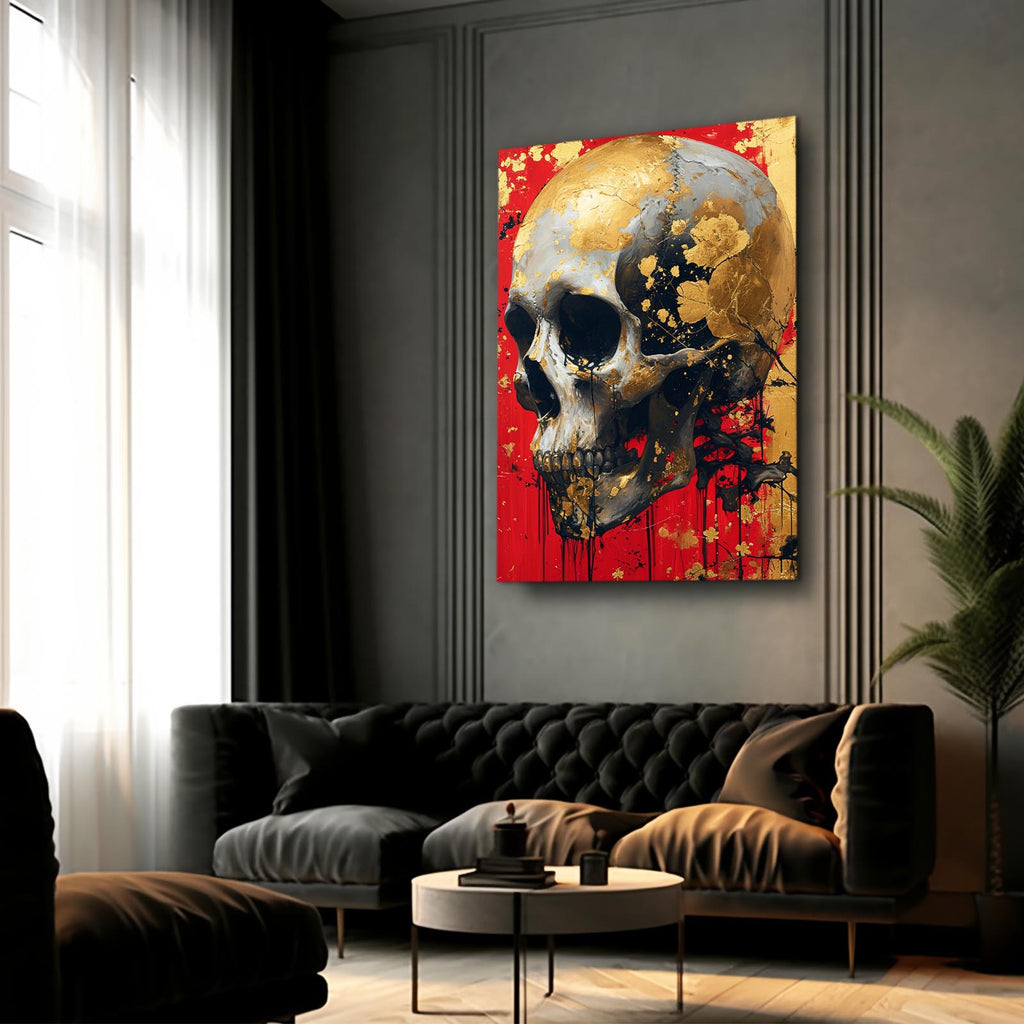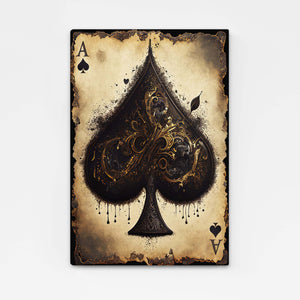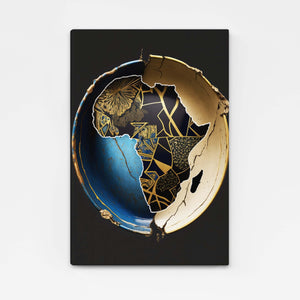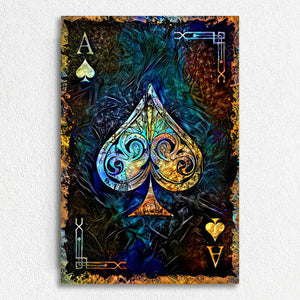Que symbolise un crâne dans l'art ?
Mar 06, 2024
Introduction
Au fil de l’histoire, le crâne est devenu un symbole puissant dans l’art, porteur de significations profondes et évoquant une large gamme d’émotions chez les spectateurs. Du memento mori au Moyen Âge aux beaux-arts contemporains, le crâne reste un sujet populaire, nous rappelant notre propre mortalité, la nature éphémère de la vie et la condition humaine universelle. Cet article se penche sur le symbolisme multiforme des crânes dans l’art, en explorant leur signification historique et leur pertinence actuelle.
Symbolisme du crâne humain
Le crâne humain symbolise notre cheminement commun vers une fin inévitable. Il nous rappelle notre mortalité, un symbole universel qui transcende les frontières culturelles. Le crâne nous encourage à réfléchir à la nature transitoire de notre existence, nous poussant à apprécier la beauté de la vie et des moments qui nous sont donnés. Ce puissant symbole sert non seulement de memento mori, mais aussi de représentation de l'égalité, nous rappelant que la mort est le grand égalisateur, indifférent au statut ou à la richesse.
La beauté de la mort : comment les crânes sont devenus un sujet intemporel de l’histoire de l’art
Les crânes sont un sujet captivant dans l'art depuis des siècles, incarnant la beauté que l'on peut trouver dans la mort. Cette juxtaposition de la vie et de la mort invite les spectateurs à contempler la fragilité de la vie humaine et l'inévitabilité de la mort. Les artistes ont utilisé des crânes pour explorer les thèmes de la vanité, la nature éphémère des plaisirs terrestres et la quête de sens au-delà du monde matériel. Les peintures de vanité, populaires au XVIIe siècle, en sont de parfaits exemples, incorporant des crânes aux côtés d'autres symboles comme des bougies éteintes et des fleurs fanées pour souligner la nature temporaire des plaisirs de la vie.
Pour montrer le changement et la transformation
Au-delà de leur rappel de la mortalité, les crânes symbolisent le changement et la transformation . Dans de nombreuses cultures, les crânes représentent la transition d'un état d'être à un autre, souvent observés lors de rituels et de cérémonies religieuses. Ce symbolisme est évident lors de la fête mexicaine du Día de los Muertos, où les crânes en sucre sont utilisés pour honorer les morts, célébrer leur vie et accueillir leurs esprits dans le monde des vivants pour une brève visite. Le crâne, dans ce contexte, symbolise le cycle de la vie et de la mort, un processus naturel de transformation qui affecte tous les êtres vivants.
Le symbolisme des crânes dans l'art
Dans le monde de l’art, les crânes sont porteurs d’un symbolisme profond. Ils nous rappellent qu’il faut vivre pleinement notre vie, en sachant qu’elle est limitée. Cela a inspiré les artistes de toute l’histoire à intégrer des crânes dans leurs œuvres comme moyen de communiquer avec leur public sur la condition humaine, l’universalité de la mort et l’importance de vivre une vie pleine de sens. Des artistes comme Hans Holbein et Charles Allan Gilbert ont magistralement utilisé des crânes dans leurs peintures pour offrir une réflexion plus profonde sur la vie, la mort et l’expérience humaine.
Les crânes dans l'art poussent également les spectateurs à affronter leurs peurs face à la mort et à l'inconnu. En présentant le crâne dans divers contextes, les artistes encouragent un dialogue avec le spectateur sur le caractère inévitable de la mort et l'importance de l'accepter comme faisant partie de la vie. Ce dialogue peut conduire à une meilleure appréciation du moment présent et inspirer une compréhension plus profonde de la beauté inhérente à la vie.
La renaissance numérique du symbolisme du crâne dans l'art contemporain
Ces dernières années, la fascination pour le symbolisme du crâne a envahi le monde de l'art contemporain, de nombreux artistes explorant ses significations riches et complexes de manière innovante. Internet a permis une diffusion et une appréciation plus larges de l'art du crâne, le rendant accessible à un public mondial. Les musées, les galeries et les plateformes en ligne proposent des collections diverses qui mettent en valeur la polyvalence du crâne en tant que sujet artistique. L'une de ces plateformes, Musa Art Gallery, présente une collection fascinante d'art du crâne qui couvre une variété de styles et de supports. En visitant la collection d'art du crâne de la Musa Art Gallery , les amateurs d'art peuvent explorer les interprétations contemporaines de ce symbole intemporel, chaque artiste apportant sa perspective unique sur les thèmes de la mortalité, de la transformation et de l'essence de l'existence humaine.
La connexion virtuelle : exploration de l'art crânien à l'ère d'Internet
De plus, l’ère numérique a révolutionné la façon dont nous interagissons avec l’art, en permettant des expériences virtuelles qui connectent le public aux artistes et à leurs créations partout dans le monde. Les galeries en ligne comme Musa Art Gallery facilitent non seulement cette connexion, mais favorisent également une compréhension et une appréciation plus profondes du symbolisme derrière l’art. Leur collection d’art du crâne témoigne de la pertinence durable du symbole du crâne dans l’art, invitant les spectateurs à s’engager avec les œuvres à un niveau personnel. Qu’il s’agisse d’un rappel brutal de la mortalité, d’une célébration de la vie ou d’un symbole de transformation , le crâne continue de captiver et d’inspirer les artistes et le public, prouvant que son importance dans l’art est plus vivante que jamais.
Conclusion
Le crâne, profondément enraciné dans l'histoire de l'art et toujours d'actualité dans la culture contemporaine, est un puissant symbole de notre expérience humaine collective. Sa représentation dans l'art sert non seulement à nous rappeler la mortalité, mais aussi à nous faire part de la beauté de la vie, de l'inévitabilité du changement et de l'universalité de la condition humaine. Les artistes, du passé au présent, ont exploité le pouvoir évocateur du crâne pour explorer des thèmes qui résonnent à un niveau profondément personnel, encourageant les spectateurs à réfléchir à leur propre vie, à leurs valeurs et à la nature éphémère de toutes choses.
Alors que nous naviguons dans les complexités de la vie moderne, le symbolisme du crâne dans l’art reste plus pertinent que jamais, offrant un pont entre le passé et le présent, l’individuel et l’universel. Il nous met au défi d’affronter nos peurs, d’accepter le changement et de célébrer la préciosité de l’instant. La fascination continue pour le symbolisme du crâne dans le monde de l’art témoigne de son attrait durable et des questions profondes qu’il soulève sur l’existence, la beauté et la mortalité.
Lancez-vous dans votre propre exploration du monde captivant de l'art du crâne. Visitez la collection Skull Art de la Musa Art Gallery dès aujourd'hui et découvrez la beauté, le mystère et le profond symbolisme que le crâne continue d'incarner dans le domaine de l'art.
FAQ:
Q1 : Pourquoi les artistes utilisent-ils des crânes dans leurs œuvres ?
A1 : Les artistes utilisent des crânes dans leurs œuvres pour explorer les thèmes de la mortalité, de la transformation et de la nature éphémère de la vie. Les crânes nous rappellent avec force notre propre mortalité et encouragent les spectateurs à réfléchir à la beauté de la vie, à l’inévitabilité de la mort et à la condition humaine universelle.
Q2 : Que symbolise le crâne dans l’art ?
A2 : Dans l’art, le crâne symbolise plusieurs concepts, notamment la mortalité, le changement, la transformation et la nature transitoire de l’existence humaine. Il représente également l’égalité, nous rappelant que la mort est une expérience universelle qui transcende les différences sociales et économiques.
Q3 : Comment le symbolisme des crânes dans l’art a-t-il évolué au fil du temps ?
A3 : Si le symbolisme fondamental des crânes (la mortalité et la nature transitoire de la vie) est resté constant au fil du temps, la manière dont les artistes représentent et interprètent les crânes a évolué. Du mémento mori médiéval à l’art contemporain, les crânes ont été utilisés pour exprimer une gamme de thèmes, notamment la vanité, la quête de sens au-delà de l’existence matérielle et la célébration de la vie malgré la connaissance de la mort inévitable.
Q4 : Pouvez-vous donner des exemples de la manière dont les crânes sont utilisés dans différents contextes culturels ?
A4 : Oui, dans la culture mexicaine, les crânes en sucre sont utilisés pendant le Día de los Muertos pour honorer et célébrer la vie des êtres chers décédés. Dans l'art occidental, les crânes sont souvent présents dans les peintures de vanité du XVIIe siècle, rappelant la vanité des plaisirs terrestres. Chaque contexte culturel confère au crâne des significations uniques liées à la vie, à la mort et à l'au-delà.
Q5 : Où puis-je voir de l’art crânien contemporain ?
A5 : L'art crânien contemporain peut être vu dans les musées, les galeries et les plateformes en ligne spécialisées dans l'art moderne et contemporain. La galerie d'art Musa, par exemple, propose une collection diversifiée d'art crânien accessible via son site Web, présentant le travail de divers artistes qui explorent le symbolisme des crânes de manière innovante.
Q6 : Comment puis-je interpréter le symbolisme du crâne dans une œuvre d’art ?
A6 : L'interprétation du symbolisme du crâne dans une œuvre d'art implique de prendre en compte le contexte dans lequel le crâne est présenté, les autres éléments auxquels il est associé et le thème général de l'œuvre. Comprendre l'intention de l'artiste et le contexte culturel peut également fournir des informations plus approfondies sur le symbolisme du crâne dans une œuvre d'art spécifique.
Q7 : Existe-t-il des ressources en ligne pour en savoir plus sur le symbolisme du crâne dans l’art ?
A7 : Oui, il existe de nombreuses ressources en ligne pour ceux qui souhaitent en savoir plus sur le symbolisme du crâne dans l’art. Les sites Web d’histoire de l’art, les revues universitaires et les galeries d’art numériques proposent des articles, des essais et des collections qui explorent l’importance des crânes dans l’art à travers différentes cultures et périodes historiques.





















